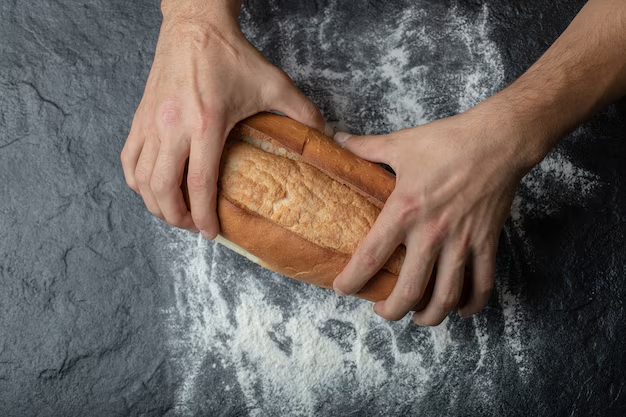Let Your Dough Rise to the Occasion: Successfully Using Your Refrigerator
Baking is an art that intertwines patience and science, often eliciting the age-old question: can dough rise in the refrigerator? The idea may seem counterintuitive. After all, aren't we told that warmth is key to activating yeast and prompting dough to rise? But the reality is more nuanced and offers a tremendously useful technique for bakers. In this article, we’ll explore the fascinating world of cold fermentation, uncover why refrigeration can benefit your dough, and provide tips to elevate your baking game.
🌾 Understanding Dough Rising: The Basics
Before diving into refrigeration techniques, let’s briefly review the fundamental concepts behind dough rising.
The Yeast and Fermentation Process
When flour, water, yeast, and salt combine, a fermentation process begins, driven by yeast that feasts on sugars in the flour. This metabolic action produces carbon dioxide gas and alcohol, causing the dough to expand, develop flavor, and transform into a textured delight.
Temperature’s Role
Typically, dough is allowed to rise in warm conditions, as warmth acts as a catalyst for yeast activity. However, cool temperatures offer a controlled, slower fermentation process that can improve texture and flavor depth—enter the refrigerator.
🥶 The Refrigerator Rising Technique
So, can your refrigerator become a dough-proofing ally? Indeed, it can. Here’s how:
Benefits of Cold Fermentation
- Enhanced Flavor: Slow, cold fermentation results in a richer, more complex flavor as yeast activity intensifies over time without the risk of over-proofing.
- Improved Texture: The prolonged rising period allows gluten structures to develop further, leading to a chewier, artisanal crust.
- Convenience: Ample flexibility allows bakers to control the baking schedule. Dough can be left in the fridge overnight or up to 24 hours, offering the convenience to bake at a preferable time.
Practical Steps for Refrigerated Dough Rising
- Mix Your Dough Properly: Ensure all ingredients are thoroughly combined. Kneading develops gluten, crucial for the dough’s structure.
- Initial Warm Rise: Allow the dough to rise briefly at room temperature post-kneading (generally around 30-60 minutes), just long enough for yeast activation to kickstart.
- Chill Time: Cover the bowl with plastic wrap or place the dough in a sealed container before refrigerating. This prevents drying and exposure to foreign odors.
Which Doughs Benefit the Most?
Not all doughs are created equal. Generally, yeasted bread doughs, such as those used in sourdough bread, pizza crusts, and some artisanal loaves, lend themselves well to this technique.
❄️ Dough Preservation and Storage Tips
Understanding how long dough can stay fresh in the fridge is as crucial as the actual process.
Storage Duration
- Optimal Timeframe: While it's safe to leave dough to rise for up to 24 hours, it will peak in quality between 12-24 hours.
- Beyond 24 Hours: The dough can technically stay refrigerated longer, but flavor and structural integrity might suffer.
Signs of Over-Fermentation
- Observational Changes: Dough may develop a greyish surface and a pronounced layer of alcohol-like scent. It's an indication the dough is fermenting too long.
- Texture and Performance Issues: Over-fermented dough can lack elasticity, resulting in a dense, crumbly loaf post-baking.
🍕 Exploring Related Dough Variations
The same principle can be applied beyond just bread. Let’s explore:
Sourdough Bread
Cold fermentation significantly impacts the complex profile typical of sourdough. Being a naturally slower-fermenting dough due to lactic acid bacteria, the refrigerated step accentuates its tartness and chewy crumb.
Pizza Dough
Pizza, beloved for its crust that balances chew and crisp, benefits from a cold-rise by yielding added lightness. Planning ahead for a pizza night can result in phenomenal tasting and textured crust.
😊 A Useful Checklist for Cold Fermentation Success
To ensure you harness the full potential of your refrigerator as a dough proofer, consider this checklist:
- ✅ Start with Quality Ingredients: Always ensure your yeast is fresh and active.
- ✅ Clock Your Initial Rise: Room temperature activation is critical for kickstarting the process.
- ✅ Tame the Chill: Always cover the dough securely to avoid drying out.
- ✅ Timing is Everything: Aim to use your dough within 24 hours for optimal results.
- ✅ Observe and Adapt: Keep an eye on fermentation cues—use sensory elements like smell and feel to guide adjustments.
Transform the Way You Bake
Refrigerating dough marks a gateway to culinary excellence through patience and precision. Whether you’re crafting sourdough, creating the perfect pizza, or venturing into other yeasted bread endeavors, mastering cold fermentation offers a baker’s secret weapon: time. Armed with this technique, you can seamlessly integrate bread-making into your schedule while maximizing flavor and texture. The next time you’re at your kitchen counter—pause—give your dough the chance to chill out and rise to the occasion. Happy baking! 🍞
